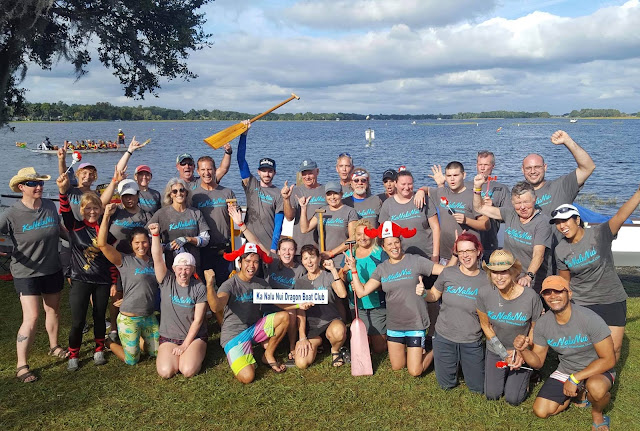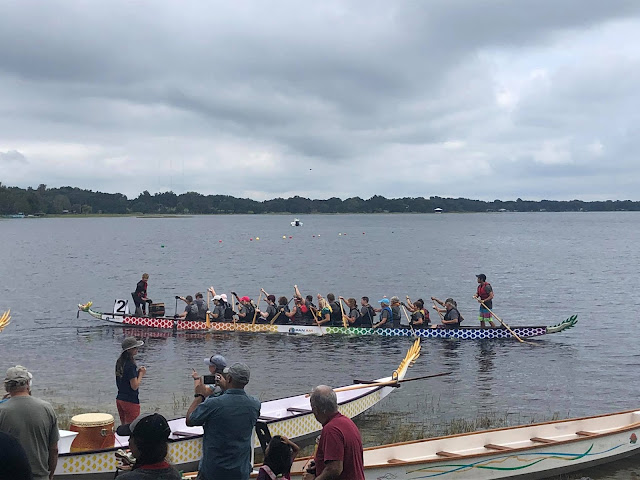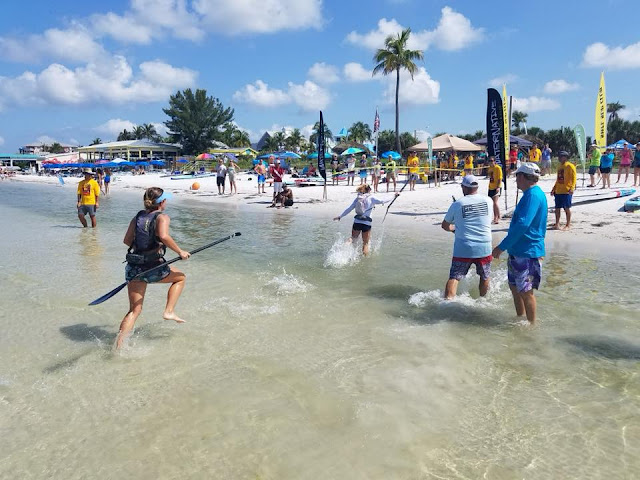I recently weighed in on the contentious issue of herbicide spraying in Florida’s waterways. The issue was highlighted in a social media post by central Florida pastor and bass fishing guide Scott Wilson. The post summarized Wilson’s years of observations of the relationship between aquatic weed spraying, water clarity, and harmful algae blooms in central Florida lakes, including Lake Okeechobee. Most of the spraying in that area is done by contractors under the direction of the Florida Fish and Wildlife Conservation Commission (FWC). Wilson noted that the weed spraying had increased over the years, becoming pervasive, and that the more the weeds were sprayed, the more water quality and clarity declined. I read Wilson’s post and commented on it because it resonated strongly with my own concerns about the underappreciated roles of aquatic vegetation in absorbing nutrient pollution and preventing algae blooms. I commented on and shared the post. Wilson then contacted me and hooked me up with nature documentarian
Jim Abernethy and his crew. They were seeking scientific perspectives on the issue, and I was happy to contribute my thoughts with an interview on campus at FGCU, where I work as an associate professor in the department of marine and ecological sciences. Abernethy’s documentary is not out yet, but
parts of my interview have been aired on a West Palm Beach television news station.
I’m pleased with how the news story came out, although I will admit to some nervousness about publically opining on the complex issues behind Florida’s water problems. I knew that by glossing over some of the nuanced pros and cons of spraying I might raise hackles among my colleagues in the fields of environmental science and management. I was confident that my core message was sound, but I was prepared to receive feedback and to edit or clarify the message if I learned important new information about the issue.
Since the interview aired I have had some interesting and helpful conversations with a science colleague at the FWC, and with Dr. Jason Ferrell, director the
University of Florida IFAS Center for Aquatic and Invasive Plants. Both my FWC pal and Dr. Ferrell validated the basic ecological concern that I had shared on TV- that excessive spraying could release nutrients from decaying plant matter, fueling algae blooms. However, they added that there could also be negative ecological consequences of failing to control invasive aquatic plants, particularly floating aquatic plants like water hyacinth (
Eichornia crassipes). In some situations, they said, spraying was the lesser evil. We also discussed other things, like balancing multiple ecological goals in management. In the rest of this post I will explain some of the issues involved in aquatic ecosystems management in a way that I hope will help reconcile weed control and algae bloom concerns.
Two, general goals of ecosystem management are:
1. The BIODIVERSITY goal: To protect native species, eliminate non-native species, and keep habitats in their historic, natural states.
2. The ECOSYSTEM FUNCTION goal: To ensure that the managed ecosystem is able to do what it needs to do, including providing services like food production, water purification, erosion prevention, flood control, and processing of chemicals.

Sometimes these two goals are complementary. For example, we have learned that diverse ecosystems (those with a variety of different species) usually function better than ecosystems that have a reduced number of species. This demonstrated link between biodiversity and the functionality of ecosystems is now one of the main justifications for protecting species from going extinct. Things get complicated when considering the effects of non-native species, though, and that’s where the two ecosystem management goals are often at odds. From the ecosystem function perspective, it doesn’t matter if a species is native or invasive as long as it contributes to a desired function of the environment. Some non-native species contribute quite a bit. However, non-native species run amok can eliminate multiple native species, reducing overall diversity and ecosystem functioning, or changing the types of ecosystem functioning performed.
Early in the history of ecosystem management we emphasized the ecosystem function goal, at the expense of native biodiversity. We intentionally introduced non-native species as crops, farm animals, game animals, decorative plants, and plants intended for windbreaks or erosion control. Some of these species introductions served us well, but many others caused problems, and native species declined. Thus, our priorities shifted to protecting native ecosystems from the invaders and other threats. This led to the classic, “protect and preserve,” type of ecosystem management, where we set aside certain areas like National Parks to keep as pristine as possible, with only native species allowed. In this mode of thinking, areas already modified by humans and non-native species were less valued and received less attention. But some ecosystem managers are realizing that protecting only the pristine areas, while the rest of the landscape goes to heck, will not be enough to provide the ecosystem functions that humans and other species need to survive. Attention is turning again to what can be done with the already-modified-and-messed-up areas that humans inhabit. In some cases, relaxing our crusade against non-native species might lead to improved ecosystem functioning.
That brings us to Florida’s issues with non-native species. For various reasons including subtropical climate, man-made damage to ecosystems (which creates opportunities for invaders), and a history of species introductions by foolish humans, Florida now has TONS of invasive plant and animal species. Florida’s universities and state agencies keep good track of the invaders and have useful field guides online, so I won’t waste space here describing each non-native species. I will say that the problem of non-native invaders is particularly apparent with aquatic plants. The non-natives that cause the most trouble seem to be the ones that have lifestyles and structures very different from any of the natives. Their differences allow them to exploit what we call “empty niches” in the ecosystem. For example, Florida originally didn’t have many big plants that were free-floating on the surface of the water. All it had in the way of free-floating plants was tiny stuff like duckweed, and the relatively unobtrusive water lettuce (
Pistia stratiotes), until it was invaded by water hyacinth. Those “big floaters” spread to fill whole rivers and lakes, shading out other plants, dying and mucking up the bottom, clogging navigation and drainage canals, etc. Dr. Ferrell and my FWC pal both cited an ill-fated 1980s moratorium on weed spraying in Lake Okeechobee as a reason to keep suppressing the hyacinths with herbicide. (
Spraying Moratorium case study) In addition to the water hyacinths, another disruptive, non-native aquatic plant is
Hydrilla verticillata. Hydrilla roots to the bottom, but its bushy stalks quickly grow to drape along the surface, and it can have some of the same negative impacts as the hyacinths. However, by absorbing nutrients from the water and creating hiding places for algae-eating plankton, Hydrilla can transform algae and nutrient-filled lakes into clear but weed-filled lakes, for better or worse. Hydrilla may also increase populations of fish and invertebrates, so some fishermen don’t mind it.
Anyway, the primary stated goal of herbicide spraying by Florida ecosystem managers is to protect native biodiversity by keeping the non-natives at bay. (Goal #1.) It’s a noble goal. Some good scientists like Dr. Ferrell at UF have been working for a long time to find efficient ways to accomplish that goal with minimum side effects. But nature is big, complicated, and constantly changing, and even our best tool for understanding it (science) isn’t perfect. As my FGCU colleague Dr. Darren Rumbold said recently,
“We need to continuously re-evaluate what constitutes best management practices [for the environment]”. I think we also need to be realistic about how well or how poorly our idealized practices are being implemented. There are many links in the chain from science to policy and practice, and good intentions can go off track. In practice, herbicide spraying may miss the ecological optimum. Here are five ways I think that could be happening in Florida:
1. The state’s process for deciding what, where, when, how much, and how often to spray involves public stakeholders, as well as the scientists and managers. That’s not necessarily a bad thing, but it can easily go bad. It introduces management goals that benefit neither biodiversity nor ecosystem function. For example, stakeholders might say, “Make the weeds go away so they don’t tickle our feet while we’re waterskiing,” “Make the weeds go away because our tenants don’t like to look at them,” “Make the weeds go away because we’re afraid snakes and bugs could be hiding in them,” “Make the weeds go away because our aesthetic preference is for a simple and tidy looking landscape,” “Keep spraying because our boat drivers need the work,” or “Keep spraying so we can continue to sell you mega-gallons of our company’s herbicide.” Depending on how much pressure the stakeholders exert, and how much resistance the managers are willing or able to give, the actual weed-spraying plan could be far removed from the science-based optimum. Florida’s current political leaders tend to give science and environmental concerns low weight in many decision-making processes. Given the underfunding and understaffing of Florida environmental management agencies, the inexpensiveness of spraying relative to other forms of plant management may be another factor leading to over spraying.
2. There is a tendency for aquatic herbicide spraying to be used as a cosmetic “solution” without addressing underlying environmental problems that may have contributed to the growth of the undesired vegetation in the first place. Instead of fixing water quality, water levels, and water flow in ways that will foster the desired aquatic plants, we force the ecosystem to look right by spraying anything we don’t like. Cycles of weed spraying, the dead weeds releasing nutrients, and the nutrients fueling growth of new weeds or algae, could contribute to an unsustainable “death spiral” of declining water quality. I think the best example of weed spraying as a superficial cover-up is the strange practice of poisoning NATIVE plants like cattails and reeds in areas where they have displaced other plants because of high nutrient levels. Picking off a scab doesn’t make a wound go away, nor does killing cattails make a nutrient pollution problem go away. In fact, both those things make the underlying problem (wound / pollution) worse.
3. In the process of balancing the biodiversity goal and the ecosystem functioning goal, I think managers in Florida have often failed to give sufficient weight to ecosystem functioning. Some key ecosystem functions of aquatic plants are: controlling runoff and erosion, providing food and habitat for wildlife, sequestering and processing nutrient pollution, and inhibiting harmful algal growth through multiple mechanisms. Ideally you’d have native plants doing all those things, but I think having non-native plants perform the functions is better than having a dysfunctional system with few plants at all. One reason I think the current weed-spraying paradigm may underweight ecosystem functions is because the benefits of those ecosystem functions are largely felt “downstream” of the area managed; out of sight, out of mind. For example, a decision to spray weeds in a Lake near Orlando might lead to a nutrient pulse running down the Kissimmee River, contributing to algae blooms in Lake Okeechobee, seeding further algae blooms as Lake Okeechobee is purged into the Caloosahatchee and St. Lucie Rivers, and even contributing to seaweed blooms in the estuaries and red tides along the coast. Of course, that nutrient pulse would largely be absorbed and its effects attenuated along that journey, but the same process repeated thousands of times in thousands of lakes and wetlands over the years could make quite an impact. I don’t think we’re accounting for that properly.
4. The balance point between the “biodiversity” and “ecosystem functioning” goals of ecosystem management also depends on whether you’re in a relatively “intact” environment, or in a heavily human-modified environment like Southwest Florida. In the nearly-intact environment there are enough native species to take care of the ecosystem functions when small patches of non-natives are removed. But in the messed up environment, non-native species may provide a large share of whatever ecosystem functioning is left. Getting rid of them could significantly degrade functionality, unless you were simultaneously doing a major restoration of the native species and environmental conditions, which isn’t always feasible. In heavily modified environments we should be pragmatic about accounting for the functions of native and non-native species alike, rather than having a simple zero tolerance policy on non-natives.
5. Florida’s philosophies, laws, and practices regarding aquatic weeds are developed at state agencies and public universities, and are applied most directly to wetlands, lakes, and rivers on publically-managed lands. The process is not perfect, but at least there is a system and some accountability. For example, the amounts and types of herbicides that the state uses in each body of water are recorded in publically available reports. However, 71% of Florida is private land, including ever-increasing amounts of urban and suburban development. What happens on private land is subject to regulations, but only barely, it seems. Nobody has a good handle on who is spraying what on private lands, why they’re spraying, how much they’re spraying, etc. This is a big problem, because we absolutely depend on the ecosystem functions of private land. Lee County alone has something like 8000 “wet detention ponds,” largely on private lands. These are small, artificial lakes, which are created to catch runoff and restore some of the surface water storage and purification functions lost when forests and wetlands are destroyed by development. The ponds are better than nothing but they generally don’t function as well as real wetlands. That’s in part because “Lake Management” contractors poison them like crazy with endless cocktails of herbicides and algicides, and property managers mow and poison away almost all the vegetation around their perimeters, leaving only close-cropped, heavily fertilized lawn grass surrounding a pickled stew of nutrients, microbes, and residual poison. Neither the “native biodiversity” goal nor the “ecosystem functioning” goal seem to get much consideration in how these water bodies are managed. We do have toothless “guidelines” for private pond management, but they’re no substitute for well-enforced regulations. For example, many local governments have a guideline for preserving a 10’ “riparian buffer” (no-mow area with wetland vegetation) around the edge of ponds and waterways. But the vast majority of ponds that I see are mowed right down to the edge, or nearly to the edge. Why do we persist in “whacking” and “nuking” our privately managed waterways? I think it’s: A) Because the weedless, manicured look is what property owners want and ask for; they don’t know or don’t care that it’s bad for the environment. B) Because herbicide is the cheapest way for landscape and lake management contractors to provide that look. And C) Because laws and regulations are too weak or too weakly enforced to stop them from doing it. We can address “A” with education and advocacy, but we need better laws and enforcement to address “B” and “C”.
Ok. This post has ended up a lot longer than I originally intended, so it’s probably best that I wrap it up with a nice “take home message.” The message is- weeds can do a lot for us, less can be more when it comes to mowing and spraying, and even-non-native plant species can be better than nothing. So if you see aquatic plant management that looks out-of-whack, learn about it, voice your concerns about it, and work to change it if necessary.
PS- I also wanted to share this series of slides that I made to demonstrate the problem of repeatedly chemically treating ponds to maintain a “neat” aesthetic.






























